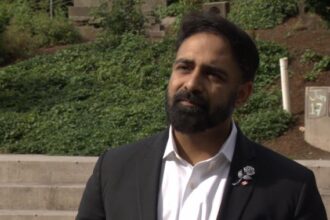Behind the smiles and academic achievements of Canada’s international student population lies a troubling reality that many Canadians remain unaware of. A groundbreaking study from the University of British Columbia Okanagan has unveiled alarming rates of food insecurity among international students, challenging Canada’s reputation as a premier destination for global education.
The research, conducted by UBCO’s School of Social Work, found that a staggering 56.4 percent of international students surveyed experienced food insecurity—a rate significantly higher than the general Canadian population. Even more concerning, 22.5 percent reported severe food insecurity, meaning they regularly went without adequate nutrition.
“These findings should serve as a wake-up call for policymakers and educational institutions alike,” says Dr. Gina Marini, lead researcher and associate professor at UBCO. “While Canada markets itself as a welcoming destination for international students, we’re seeing evidence that many are struggling with the most basic necessities.”
The study points to several contributing factors, including the exorbitant tuition fees international students face—often three to five times higher than what domestic students pay. This financial burden is further compounded by rising living costs in major Canadian cities where most universities are located.
“Many international students arrive with financial plans based on outdated or misleading information about the true cost of living in Canada,” explains Marini. “When they discover the reality of our housing market and food prices, they’re often forced to make impossible choices between paying rent and eating properly.”
The research also highlighted concerning coping mechanisms students employ, from skipping meals to relying heavily on low-quality, calorie-dense foods. Some reported working multiple jobs despite visa restrictions limiting them to 20 hours per week during academic terms.
The timing of this study is particularly relevant as Canada’s international student program faces increased scrutiny. Recent policy changes, including a temporary cap on international student permits announced earlier this year, reflect growing concerns about the sustainability of the current system.
From a political perspective, this situation creates a complex dilemma. International students contribute an estimated $22 billion annually to Canada’s economy, making them a crucial source of revenue for both educational institutions and the broader economy. However, the ethical implications of recruiting students who subsequently struggle to meet basic needs raises serious questions about Canada’s duty of care.
“Universities and colleges benefit enormously from international student tuition, but many institutions provide inadequate support systems,” notes Dr. Ethan Chen, an education policy expert not affiliated with the study. “This creates a situation where Canada appears to be exploiting vulnerable young people who come here with dreams of a better future.”
The study recommends several potential solutions, including expanded on-campus food banks, emergency financial assistance programs, and more transparent information about true living costs during the recruitment process. However, researchers emphasize that these are band-aid solutions to a systemic problem requiring comprehensive policy reform.
For business observers, the implications extend beyond academia. Local economies that have grown dependent on international student spending may need to adapt if Canada implements stricter regulations or if Canada’s reputation as a student destination suffers.
As this issue gains visibility in the national discourse, universities across the country are being forced to confront their responsibilities to international students. Some institutions have already begun implementing expanded support services, but experts suggest much more needs to be done.
The question now facing Canadian society is profound: Can we reconcile our desire to attract international talent with our ethical obligation to ensure those same students can live with dignity while pursuing their education? The answer will shape not only the future of Canada’s higher education system but also its standing in the global community.

























